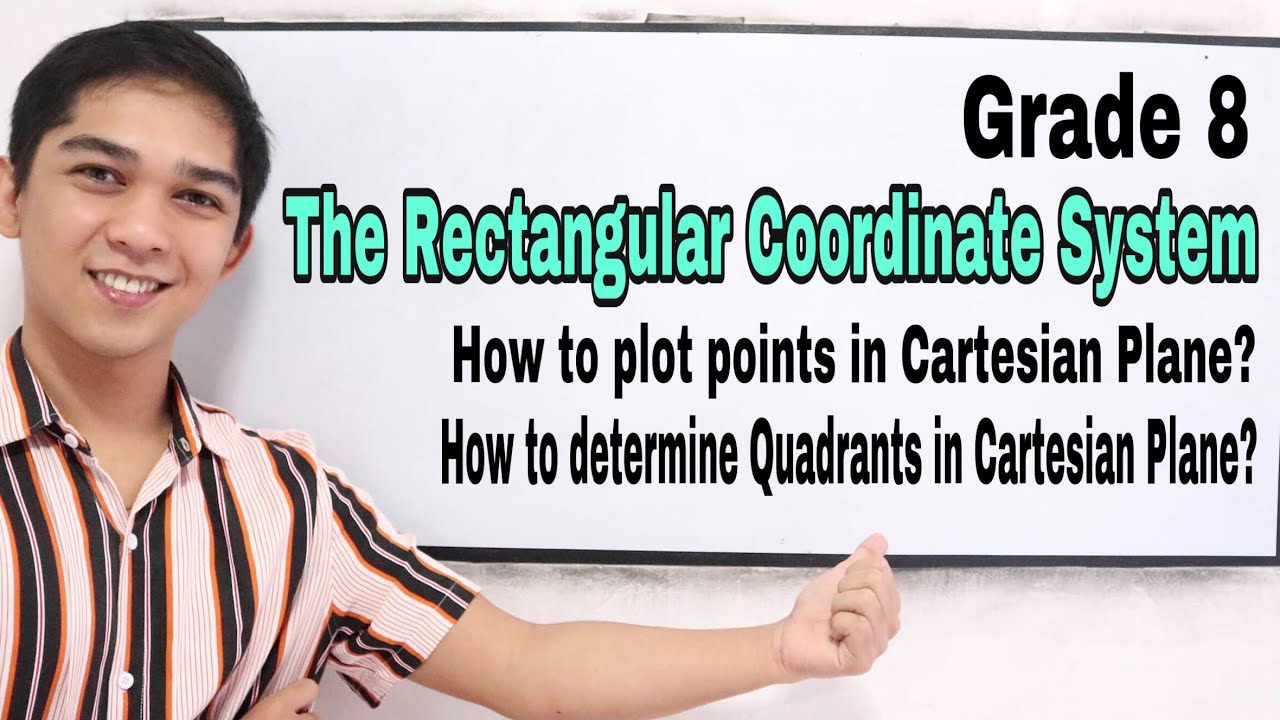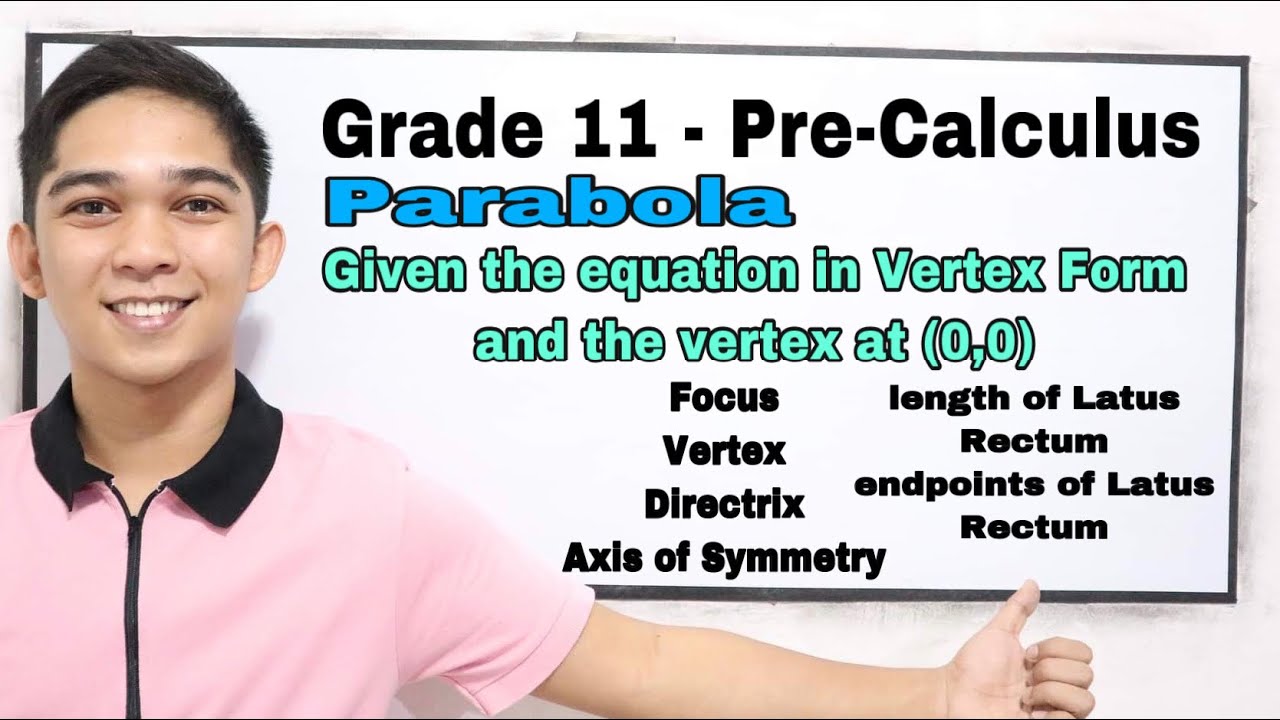EPISODE 1- GENERAL MATHEMATICS : Answering Sample Questions in Modules
Summary
TLDRIn this video, Senior Pablo introduces his new channel, 'Senior Pablo Tricks and Trivia,' where he goes through a Grade 11 periodic test. He reviews questions about functions, including identifying sets of ordered pairs, using the vertical line test, and determining functions from arrow diagrams. He solves problems involving function graphs and compositions, and explains how to find ranges and undefined values in functions. The video aims to help students understand key concepts in general mathematics. Stay tuned for part two on Saturday.
Takeaways
- 🎓 The video is a tutorial by Senior Pablo, aimed at helping grade 11 students with their periodic test in general mathematics.
- 📝 The script provides solutions to a set of math questions, starting with question number one about defining a function based on ordered pairs.
- 🔍 The function definition criteria are explained: no x-coordinate should repeat for a set to define a function.
- 🚫 Choice 'A' is incorrect because it contains a repeated x-coordinate, while 'B' is correct as it has unique x-coordinates.
- 📈 The vertical line test is mentioned as a method to determine if a graph represents a function, with 'B' being the correct answer for question two.
- 🔄 The concept of one-to-one and many-to-one correspondence is discussed, with 'C' being the correct answer for question three as it represents a function.
- ❌ Question four uses the vertical line test to identify a graph that does not define a function, with 'D' being the incorrect graph.
- 🔢 For question five, the script demonstrates how to find the value of a function 'f(x)' when x is -2, resulting in -5.
- 📊 In question six, the script calculates the range of a function 'f(x) = x/2 + 3' for given x values, concluding with the range 2, 3, 4, 5, 6, 7.
- 🔄 Question seven involves finding the value of a composite function 'f(g(x))' where 'f(x)' and 'g(x)' are given, resulting in zero for x=3.
- ⛔ Question eight identifies the value of x that makes the product of two functions undefined, which is x=2.
- 📅 The video concludes with a teaser for part two of the series, scheduled for the following Saturday.
Q & A
What is the definition of a function according to the video?
-A function is defined such that for every x-coordinate, there must not be a repetition; each x-coordinate must correspond to exactly one y-coordinate.
Why is option A incorrect for the first question in the video?
-Option A is incorrect because the x-coordinate negative two is repeated twice, violating the definition of a function.
What is the correct answer for the first question in the video?
-The correct answer is B, as it is the only option where the x-coordinates do not repeat.
What is the vertical line test mentioned in the video?
-The vertical line test is a method to determine if a graph represents a function by checking if any vertical line drawn would intersect the graph more than once. If it does, the graph does not represent a function.
Why is option B the correct answer for question two in the video?
-Option B is correct for question two because it is the only graph that passes the vertical line test, meaning for every value of x, there is only one value of y.
What does the term 'one-to-many' correspondence mean in the context of functions?
-In the context of functions, 'one-to-many' correspondence means that a single x-value can map to multiple y-values, which is not the definition of a function.
Why is option C the correct answer for question three in the video?
-Option C is correct for question three because it represents a 'one-to-many' correspondence, which is a characteristic of a function.
What does it mean for a function to be undefined at a certain value?
-A function is undefined at a certain value if the function's expression cannot be evaluated at that value, often due to division by zero or taking an even root of a negative number.
What is the correct answer for question four in the video?
-The correct answer for question four is D, as it is the only graph that fails the vertical line test, indicating that it does not define a function.
How is the value of f(x) calculated when x is negative two in the video?
-The value of f(x) when x is negative two is calculated by substituting x with -2 in the expression f(x) = 4x^2 + 3x - 15, which results in a value of negative five.
What is the range of the function f(x) = x/2 + 3 given the domain {0, 2, 4, 6, 8}?
-The range of the function f(x) = x/2 + 3 with the given domain is {2, 2.5, 4, 5, 6.5, 7}, which corresponds to the values of f(x) when x takes on the values in the domain.
What is the value of f(g(3)) in the video?
-The value of f(g(3)) is zero. This is found by first calculating g(3) which is 1, and then substituting this into f(x) which results in f(1) = 1^4 - 1 = 0.
What value of x makes the product of f(x) and g(x) undefined in the video?
-The value of x that makes the product of f(x) and g(x) undefined is x = 2, as this is the value that makes the denominator in both functions equal to zero.
Outlines

This section is available to paid users only. Please upgrade to access this part.
Upgrade NowMindmap

This section is available to paid users only. Please upgrade to access this part.
Upgrade NowKeywords

This section is available to paid users only. Please upgrade to access this part.
Upgrade NowHighlights

This section is available to paid users only. Please upgrade to access this part.
Upgrade NowTranscripts

This section is available to paid users only. Please upgrade to access this part.
Upgrade NowBrowse More Related Video

The Rectangular Coordinate System / Cartesian Plane

Pre-Calculus : Hyperbola - Transforming General Form to Standard Form

72 and FREE: How He ESCAPED a Life of Work to Live on the Road!

If I could give advice to myself when starting as a software engineer

SET 4

Pre-Calculus - Parabola : If the Vertex is (0,0) find the Focus, Directrix, Axis of Symmetry, Latus
5.0 / 5 (0 votes)